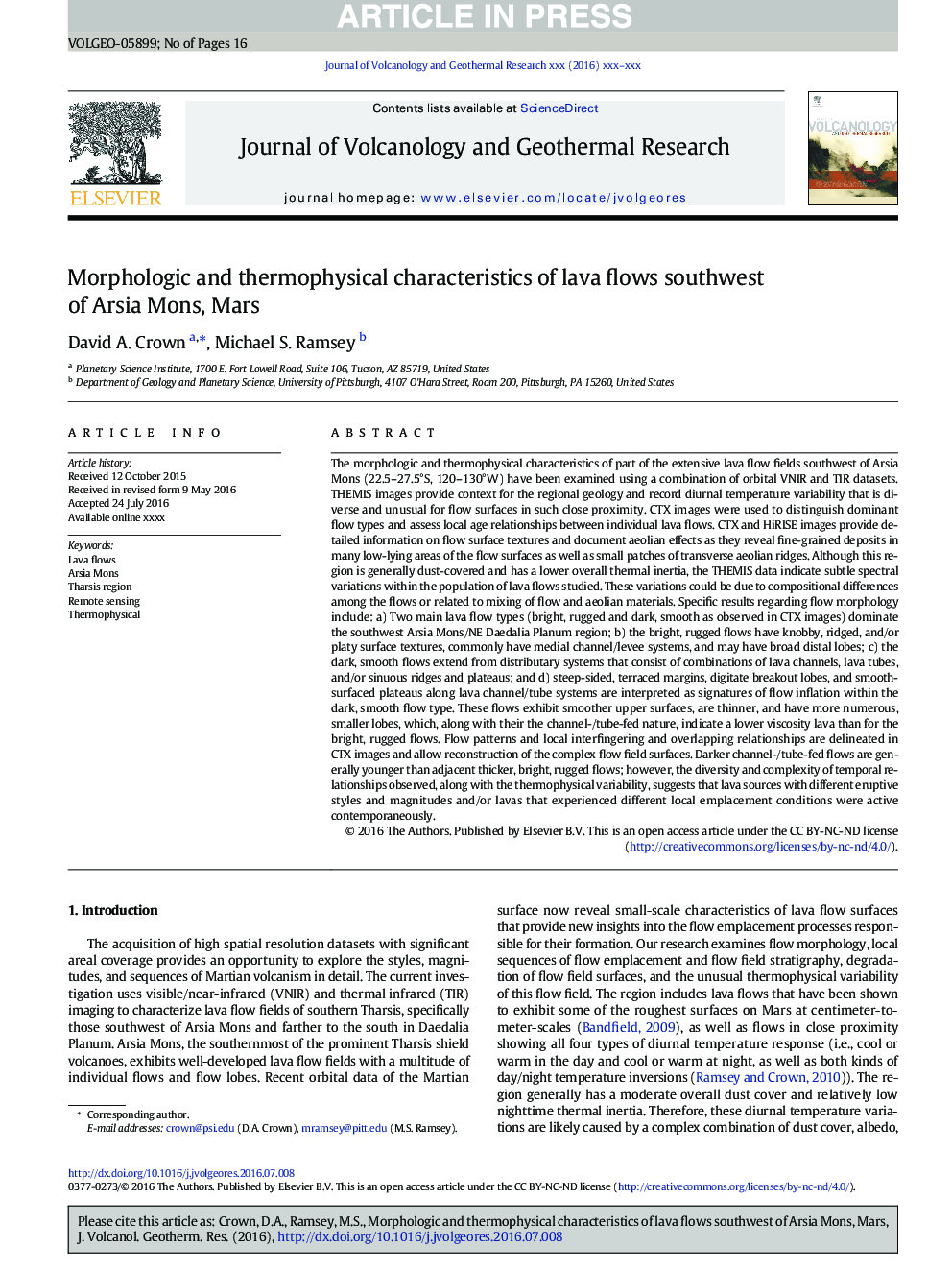| کد مقاله | کد نشریه | سال انتشار | مقاله انگلیسی | نسخه تمام متن |
|---|---|---|---|---|
| 5783661 | 1638281 | 2017 | 16 صفحه PDF | دانلود رایگان |
عنوان انگلیسی مقاله ISI
Morphologic and thermophysical characteristics of lava flows southwest of Arsia Mons, Mars
ترجمه فارسی عنوان
ویژگی های مورفولوژیکی و حرارت شناسی جریان های گدازه جنوب غربی آرشیا مونس، مریخ
دانلود مقاله + سفارش ترجمه
دانلود مقاله ISI انگلیسی
رایگان برای ایرانیان
کلمات کلیدی
جریان لاوا، آرشیو مونس، منطقه تارسیس، سنجش از دور، ترموفیزیک،
موضوعات مرتبط
مهندسی و علوم پایه
علوم زمین و سیارات
ژئوشیمی و پترولوژی
چکیده انگلیسی
The morphologic and thermophysical characteristics of part of the extensive lava flow fields southwest of Arsia Mons (22.5-27.5°S, 120-130°W) have been examined using a combination of orbital VNIR and TIR datasets. THEMIS images provide context for the regional geology and record diurnal temperature variability that is diverse and unusual for flow surfaces in such close proximity. CTX images were used to distinguish dominant flow types and assess local age relationships between individual lava flows. CTX and HiRISE images provide detailed information on flow surface textures and document aeolian effects as they reveal fine-grained deposits in many low-lying areas of the flow surfaces as well as small patches of transverse aeolian ridges. Although this region is generally dust-covered and has a lower overall thermal inertia, the THEMIS data indicate subtle spectral variations within the population of lava flows studied. These variations could be due to compositional differences among the flows or related to mixing of flow and aeolian materials. Specific results regarding flow morphology include: a) Two main lava flow types (bright, rugged and dark, smooth as observed in CTX images) dominate the southwest Arsia Mons/NE Daedalia Planum region; b) the bright, rugged flows have knobby, ridged, and/or platy surface textures, commonly have medial channel/levee systems, and may have broad distal lobes; c) the dark, smooth flows extend from distributary systems that consist of combinations of lava channels, lava tubes, and/or sinuous ridges and plateaus; and d) steep-sided, terraced margins, digitate breakout lobes, and smooth-surfaced plateaus along lava channel/tube systems are interpreted as signatures of flow inflation within the dark, smooth flow type. These flows exhibit smoother upper surfaces, are thinner, and have more numerous, smaller lobes, which, along with their the channel-/tube-fed nature, indicate a lower viscosity lava than for the bright, rugged flows. Flow patterns and local interfingering and overlapping relationships are delineated in CTX images and allow reconstruction of the complex flow field surfaces. Darker channel-/tube-fed flows are generally younger than adjacent thicker, bright, rugged flows; however, the diversity and complexity of temporal relationships observed, along with the thermophysical variability, suggests that lava sources with different eruptive styles and magnitudes and/or lavas that experienced different local emplacement conditions were active contemporaneously.
ناشر
Database: Elsevier - ScienceDirect (ساینس دایرکت)
Journal: Journal of Volcanology and Geothermal Research - Volume 342, 15 August 2017, Pages 13-28
Journal: Journal of Volcanology and Geothermal Research - Volume 342, 15 August 2017, Pages 13-28
نویسندگان
David A. Crown, Michael S. Ramsey,
